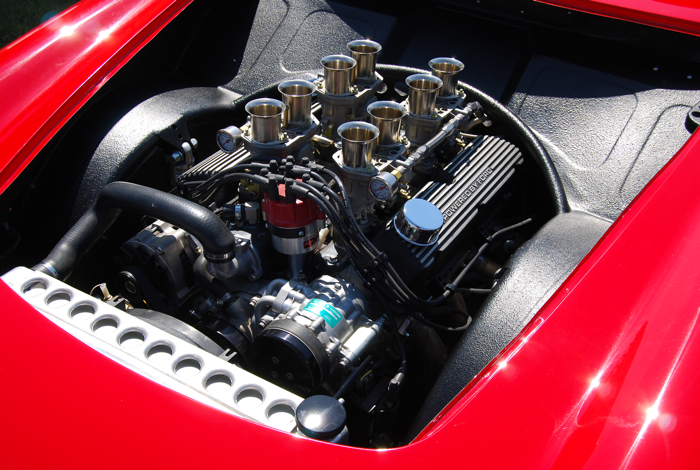Effective and effective Tiny Cars and truck Electric Motor Performance Evaluation
Analyzing the efficiency of little car motors is a nuanced job that requires an eager eye for detail and a deep understanding of vehicle engineering principles. By taking a look at crucial metrics such as horsepower and torque, as well as examining fuel effectiveness, we can reveal understandings into how little car engines can be optimized for peak performance.

Small Auto Motor Performance Metrics
In analyzing the efficiency of little car motors, key metrics such as velocity, gas effectiveness, and power result play a critical role in determining their overall performance and viability for different driving conditions - opel corsa engine. By reviewing these performance metrics adequately, makers, drivers, and automotive lovers can make enlightened decisions relating to the choice and optimization of little car motors to satisfy their specific needs and choices.

Horse Power and Torque Analysis
With a fundamental duty in comprehending tiny vehicle motor performance, horsepower and torque analysis gives insight into the engine's power delivery features. In the context of tiny vehicle electric motors, horse power is critical for establishing acceleration, top speed, and general efficiency. By comprehending the relationship between horsepower and torque, automobile engineers can enhance engine performance to satisfy the specific requirements of small auto applications.
Fuel Effectiveness Evaluation
The evaluation of fuel effectiveness in tiny car motors plays a vital role in identifying their ecological and financial impact. Fuel efficiency describes the capacity of an automobile to make use of fuel effectively in regard to the distance took a trip. In tiny car electric motors, where portable size frequently correlates with much better fuel economic climate, different aspects influence effectiveness. Engine layout, weight, the rules of aerodynamics, and driving conditions all contribute to how successfully gas is eaten.
Tiny automobile electric motors that accomplish greater MPG ratings are considered more fuel-efficient, resulting in expense financial savings for drivers and decreased emissions that profit the setting. Suppliers continually make every effort to boost fuel effectiveness through innovations in engine innovation, lightweight products, and wind resistant designs.

Enhancing Little Auto Engine Efficiency
Enhancing the efficiency of small car engines is critical in making best use of efficiency and minimizing functional prices. Optimizing small auto engine performance entails an alternative approach that takes into consideration different factors such as engine style, gas management systems, and total car dynamics. One key aspect of optimizing engine efficiency is making certain correct maintenance schedules are followed, consisting of routine oil adjustments, filter substitutes, and ignition system examinations. Additionally, tuning the engine to operate at its peak performance can considerably improve overall performance.
One more critical consider optimizing small automobile engine performance is the application of advanced modern technologies such as turbocharging or crossbreed systems. These technologies can improve power outcome without compromising gas performance, providing a balance between performance and anchor economy. Maximizing engine performance additionally entails boosting burning efficiency, decreasing frictional losses, and boosting thermal monitoring systems.
Future Trends in Small Car Motors
Due to advancing vehicle innovations and the continual search of optimal tiny vehicle engine performance, an exploration of future trends in tiny car electric motors becomes necessary - opel corsa engine. One prominent pattern imminent is the boosting assimilation of electric powertrains in little cars. As the auto market shifts towards sustainability and minimized emissions, even more tiny vehicle manufacturers are purchasing article source electric motor technology to improve efficiency and ecological friendliness
Another considerable fad is the advancement of smaller yet more powerful turbocharged engines for small automobiles. By downsizing engine abilities and including turbocharging technology, automakers can attain higher power results while preserving gas efficiency. This fad straightens with the growing consumer need for tiny automobiles that deliver a dynamic driving experience without jeopardizing on gas economic climate.
In addition, the appearance of hybrid powertrains in little cars is anticipated to gain traction in the future. Hybrid systems use the advantages of both internal burning engines and electric motors, offering better performance and fuel efficiency. As developments in battery modern technology continue, tiny automobile electric motors are likely to become even more effective and powerful, accommodating the advancing needs of customers and regulative requirements for cleaner transportation services.
Conclusion
To visit conclude, the evaluation of tiny auto motor efficiency metrics such as horse power, fuel, and torque effectiveness is important in optimizing engine performance. By examining these aspects, producers can improve the general effectiveness and power outcome of tiny vehicle motors (opel corsa engine). Future fads in tiny car motors are most likely to concentrate on improving performance while keeping gas effectiveness, making sure that small cars remain to be a affordable and reputable choice for customers
By taking a look at key metrics such as horse power and torque, as well as examining gas performance, we can discover insights right into how small automobile engines can be optimized for peak performance. Optimizing little car engine performance entails an all natural strategy that takes into consideration various factors such as engine layout, gas administration systems, and general automobile characteristics.In light of progressing automotive innovations and the continual pursuit of optimum little automobile engine performance, an expedition of future patterns in small automobile electric motors ends up being important.In final thought, the evaluation of tiny car motor performance metrics such as horse power, fuel, and torque efficiency is essential in optimizing engine performance. Future fads in little car motors are likely to concentrate on enhancing performance while keeping gas performance, making sure that little vehicles proceed to be a trusted and cost-effective selection for consumers.